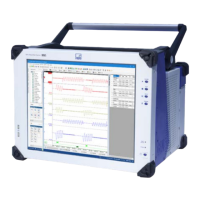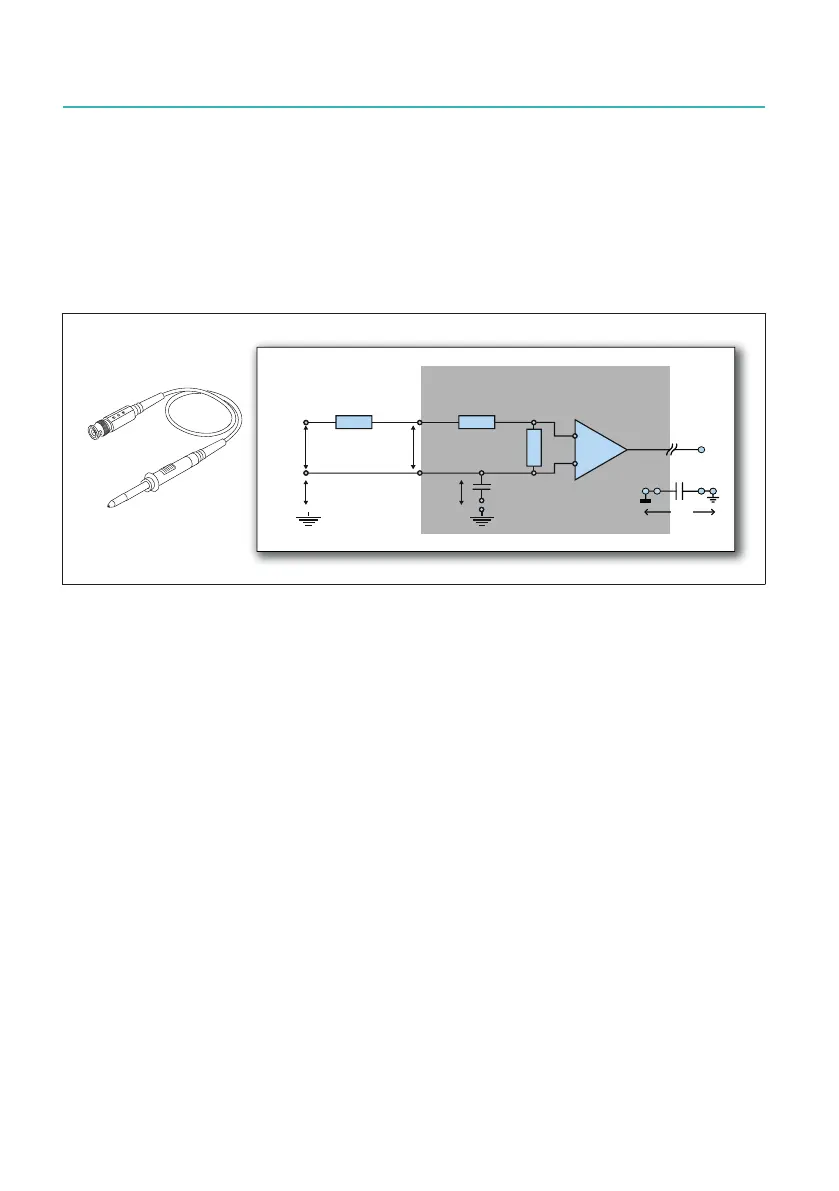GEN7iB
342
UNDERSTANDING INPUTS AND USAGE OF PROBES
UNDERSTANDING INPUTS AND USAGE OF PROBES
15
15.2.2 Passive, single-ended isolated voltage probes
Passive, single-ended isolated voltage probes divide an isolated input signal by a spe-
cicfactor.Theyaredesignedinan“isolatedway”(likeplasticBNCstopreventusers
from touching the connection) so they can be used in series with an isolated unbal-
ancedamplier.Theyarecalled“isolatedvoltageprobes”,althoughtheamplierand
not the probe adds the isolation.
8
GLII
8
LVR
8
LVR
8
GLII
*1' *1'
6LQJOHHQGHGLVRODWHGRU
XQEDODQFHGGLIIHUHQWLDODPSOLILHU
0
.
,VRODWLRQ
%DUULHU
.
8
LVR
1RQLVRODWHG
V\VWHP
Fig. 15.8 Typical example of an isolated voltage probe
Theoretically,voltageprobesforisolatedampliersaresimplypassivein-lineresistors
inserieswiththepositiveinputofanisolatedunbalancedamplieraswell.
Togetherwiththeinputresistoroftheamplier,theyformavoltagedividersothatthe
voltageinfrontoftheamplieritselfisdivided.Asthereisalsoacapacitivecompo-
nentinthisdivider,theinputcapacitanceoftheamplierandtheso-called“compensa-
tion range” of the probe need to match. Otherwise, signal distortion might occur.
However,asthedivisiononlyappliestothepositivesideoftheamplierinput,the
input range is increased while the isolation voltage remains the same as without a
probe.
Theseprobescanonlybeusedinserieswithisolatedunbalancedampliers.
Isolated voltage probes typically decrease the overall accuracy of the system (caused
by the inaccuracy of the input divider ratio formed by the external probe resistance and
theinternalamplierresistance).

